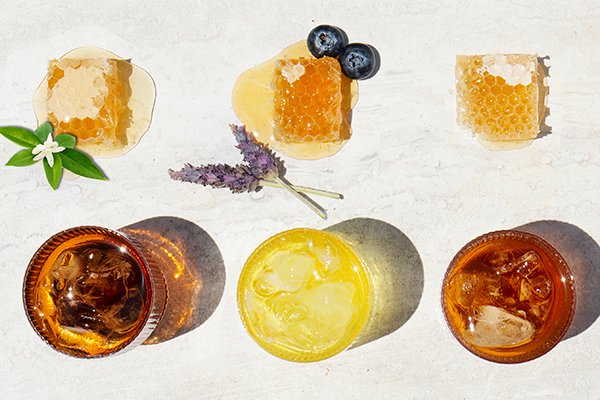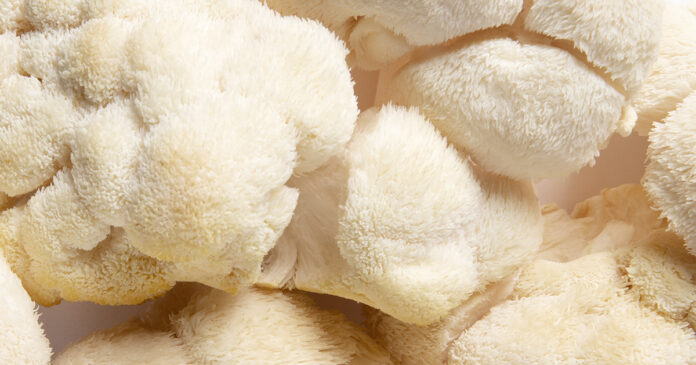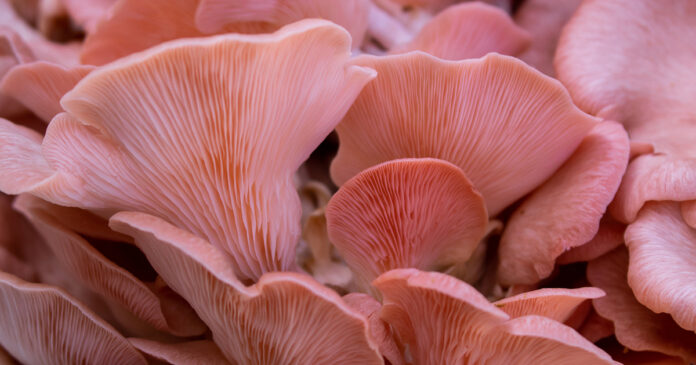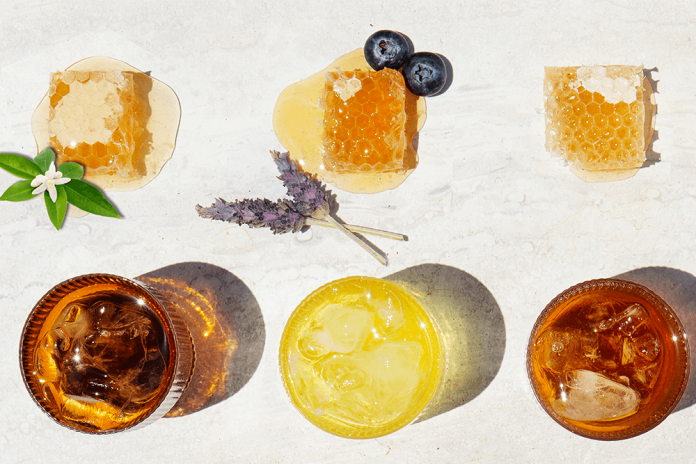Mmmm… hot tea and honey.
Do you only think of that combo as something your mom would make you drink to soothe your throat or your sniffles?
There’s a lot more to it than that!
This natural sweetener also adds a dose of antioxidants, prebiotics, and other compounds known for their ability to support a healthy immune system.
Ancient Uses of Honey
The therapeutic powers of honey are no secret. It was purportedly used as an antibiotic ointment and digestif as long as 8,000 years ago, and several ancient civilizations documented honey’s place as a medicinal remedy [1].
The Egyptians primarily applied honey as a topical salve to speed up wound healing. Hieroglyphics and papyrus prescriptions dating back to roughly 1700 BC show how honey was used to protect surgical incisions from infection.
The Greeks mixed it with water and wine to create an elixir that aided digestion. It was also mixed with other herbs and powders to form a paste applied to the eyes and ears to treat pain and infection. [2]
According to Traditional Chinese Medicine, honey is a balanced substance (neither “warming” nor “cooling”) that can remedy indigestion, stomach ulcers, and constipation. Honey and warm milk were also thought to ease anxiety and insomnia.
Ancient Sanskrit texts also describe honey as a treatment for a range of ailments including not just skin and stomach issues, but also vision problems, respiratory diseases, and even blood sugar control. [3]
Why Add Honey to Tea?
Modern-day research backs up most of what these ancient civilizations suspected. [4][5][6]
Many studies, for example, have found that honey’s antibacterial property makes it an appropriate choice as a treatment for cuts, abrasions, and other wounds. [7]
Many others have found that the phenolic compounds in honey do indeed help to keep the digestive system healthy, and a healthy gut is key to a healthy immune system.
Honey’s antioxidant content likewise helps to protect cells from damage, supporting the body’s ability to more easily fight off illness. [8]
You may not want to follow the Ancients’ lead and start applying honey directly to your skin or mixing it with wine, but drizzling some into tea is an easy and tasty way to reap honey’s health benefits.
Honey is also a great alternative to white table sugar and calorie-free sweeteners that offer little or no nutritional benefit, and also bring no unique flavor beyond sweetness.
But first, it’s useful to understand the differences between the many types of honey on the grocery shelves today, and how your choice can affect the flavor of your brew.
The Many Varieties of Honey
There are more than 300 types of honey in the U.S. [9]
While all honey is predominantly fructose and glucose, each variety also contains amino acids, vitamins, minerals, and enzymes. The exact chemical makeup depends on the type of flower nectar at the base of the honey. This composition also determines the honey’s color and flavor.
Experimenting with tea and honey pairings is an opportunity to discover new flavor combinations — finding the right complementary match can enhance the overall taste of your favorite tea.
- The astringency and sometimes grassy taste of green teas, for example, can be cut by a more floral honey, like Lavender or Clover. Blueberry honey also adds a nice complementary flavor.
- The dark and roasty flavor of black teas can be brightened and elevated by the citrus note found in Orange Blossom honey.
- White tea, already delicate, can easily be overwhelmed by stronger flavors and should be paired with a similarly light honey, like the Acacia variety.
Honey can also be paired well with other flavors. Adding honey and a dash of cinnamon to rooibos tea, for example, adds a layer of warmth and richness that makes this concoction a perfect drink for cooler months.
A light-flavored honey with a squirt of lemon juice has the opposite effect, adding a “zing” that lightens up a mid-day tea break.
The therapeutic properties of honey can also be complemented or amplified by some of these pairings. Ginger, for example, can help to calm an upset stomach, buttressing honey’s benefits as a digestive aid and balancing out its sweetness with a bit of spice.
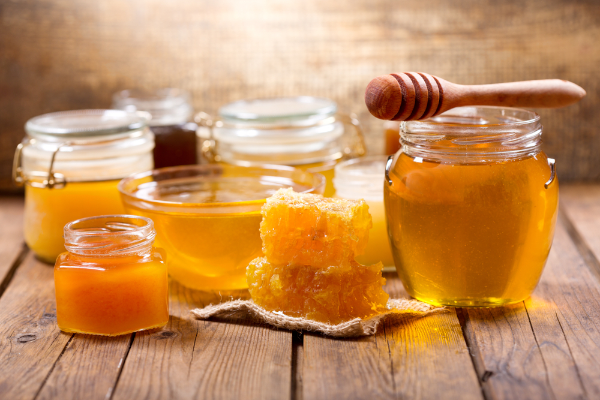
Raw vs. Processed Honey
Aside from variety, there are other key differences to consider in your honey purchase. You’ve probably seen the traditional honey-bear bottle, which usually contains processed clover honey (one of the most common varieties).
Further down the shelf you might see a larger, more expensive glass bottle of raw Manuka honey. Is the former somehow less healthy than the latter, and is “healthier” honey worth the extra cash?
There certainly is a prevailing belief that raw honey has more nutritional benefits, which seems logical. You should know, however, that thus far, scientific analyses have shown there are few nutritional differences between raw and processed honey. Still, it’s worth understanding what these labels mean, so you can know how they’re made and decide which is best for you. [10]
Raw is honey taken straight from the hive. Bits of honeycomb and other debris that get stuck in the honey are filtered out, but it usually maintains a cloudy appearance.
Processed honey is pasteurized to kill off yeast cells that can affect flavor and to increase shelf life. It’s also more finely strained, resulting in a smoother and more regular appearance. [9]
While processed honey retains some antioxidant and antibacterial properties, they may be less pronounced compared to raw honey. Phytochemicals, after all, are sensitive to extreme heat, and the pasteurization process may damage some of the vitamins, enzymes and other phenolic compounds found in raw honey.
Finer filtration can also remove bee pollen and bee propolis, which contain antioxidants and are responsible in part for honey’s anti-inflammatory effects. [11]
Some processed honey may contain additives including high-fructose corn syrup or brown rice syrup. This type of honey is not the best choice if your goal is to reap health benefits. Always check the ingredients label and look for varieties with only one item on the list: honey.
If raw honey is what you’re after, make sure the label specifically says “raw.”
“Organic,” “natural,” and “pure” don’t necessarily mean that the honey has not been pasteurized. Raw honey may have some color variations and sugar crystallization going on, but is still safe to eat.
While Manuka honey has garnered a lot of attention as a more potent source of antibacterial and antioxidant power, studies show that this may be true to a degree, but the difference isn’t large enough to warrant a switch if you already prefer another type of raw honey. [12]
Using Honey In Your Tea
Honey tastes sweeter than sugar, and a little goes a long way. One teaspoon of honey per cup of tea is a good rule of thumb. Make sure to add the honey after the leaves have had a chance to steep and the water has cooled slightly.
If the water is too hot, it can kill the phytochemicals you’re after in the first place and alter the honey’s taste, making it slightly bitter. As a rule, the water should be warm, but not too hot to touch.
Recipes
Green Honey Lemon Ginger Tea
- 1 tablespoon loose green tea leaves
- 2 tablespoons minced, fresh ginger root
- 1 tablespoon lemon juice,
- 1 tablespoon Clover honey
Spiced Honey Tea
- 1 tablespoon loose Earl Grey tea
- 1 cinnamon stick
- 4 cloves
- 2 tablespoons Sage honey
- 1 tablespoon fresh lemon juice
For each recipe, heat a pot of water until it is simmering, not boiling, and pour it into a cup along with your tea leaves and spices. Let them steep for 3 to 5 minutes before straining them out. Now add your lemon and honey, stir to evenly distribute, and enjoy!
The Last Word
Honey is a smart addition to tea because, in addition to a hint of sweetness, it also provides antioxidants and other compounds shown to help prepare your body to fight off infections. It’s important to remember, though, that honey is best used as a preventive tool, not a cure-all. A balanced and varied diet, rich in all of the phytochemicals that plant-based foods have to offer, is the best defense against illness only if it is consistent.
Simple but sustainable habits are key to good health and strong immunity. No need to stock up on Emergen-C if you’ve been treating your body well all along. Drinking tea with honey can certainly help you feel better when you feel sick, but drinking it before you get sick can help you stay well for longer. Try out some combinations and discover your new favorite flavor!
